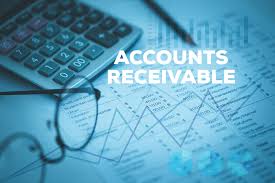 Accounts receivable have a significant effect on cash flow at most companies, though the exact impact can vary. There’s only one question that matters: Whether the accounts receivable have enough impact to affect business operations. If so, managing them well is one of the most important factors to staying in business. Otherwise, companies can relax a little.
Accounts receivable have a significant effect on cash flow at most companies, though the exact impact can vary. There’s only one question that matters: Whether the accounts receivable have enough impact to affect business operations. If so, managing them well is one of the most important factors to staying in business. Otherwise, companies can relax a little.
Using software for accounts receivable has become increasingly popular. It can help automate accounting, billing, collections, and estimate future cash flow. All of these have clear value for businesses, but let’s take a closer look at how accounts receivable impact cash flow.
Definitions
As a quick refresher, accounts receivable are bills for goods or services your business has provided but for which you haven’t received payment yet. Accounts receivable can be short-term (such as credit card payments that take a day or two to process) or long-term (a bill that a customer doesn’t have to pay for weeks or months).
Cash flow is how much money goes in and out of your business. Positive cash flow means the company earns more than it spends, while negative cash flow is the opposite.
Though all businesses ultimately need a positive cash flow to succeed, some may remain negative for years. Indeed, they might take on additional debt or investments to try and expand services and scale up to a viable position. In other words, whether cash flow is positive or negative is only one element of the story.
How Much Impact Do Accounts Receivable Have?
The impact of accounts receivable on cash flow depends on what part of sales uses credit and what uses cash or debit transactions (which are immediate payments and therefore income).
Some industries have little or no payments with credit. For example, many street vendors, laundromats, coffee shops, and babysitters work mainly in cash, so accounts receivable are irrelevant.
In contrast, certain sectors rely mostly or entirely on credit for their transactions. Aviation companies like Boeing and Airbus often make sales many months ahead of delivering their products. The transactions are typically so large that many buyers can’t afford to pay all at once, so pay the balance off over time instead.
Essentially, there’s no standard impact for accounts receivable across businesses. Factors like location, market, products or services provided, customer base, and pricing can all affect how many sales use credit. Some software for accounts receivable can help predict future changes to the amount.
As a general rule of thumb, companies that sell moderately expensive products or services tend to have more credit sales. In this context, moderately expensive means anything higher than their day-to-day costs but lower than something like a vehicle where people will use a specific loan.
Similarly, risky industries may have more credit sales. Credit offers additional protection to buyers in case of fraud, so some people will prefer to buy with that if they’re worried about potential issues cropping up.
Higher and Lower Accounts Receivable
Higher accounts receivable usually means lower cash flow, while reducing accounts receivable means higher cash flow.
Some businesses see constant changes in this number, especially among those with cyclical product releases. Other companies tend to be steady and predictable throughout the year, so the amount of accounts receivable usually stays within a specific range.
Companies can adjust their cash flow by taking steps to change their accounts receivable.
Using Accounts Receivable To Improve a Business
Accounts receivable are ultimately a tool for businesses to help with using credit. Like all tools, it’s possible to manipulate them in ways that can improve your business. Here’s how changing things could affect your cash flow.
Step 1: Evaluating Cash Flow
Start by looking at your cash flow, including predictions for the next few months. Ideally, the business is in a good position, with enough cash to comfortably cover expenses. Of course, that is easier for some companies than others.
For example, ice cream businesses may be in the red for most of the year, relying on sales during summer to stay profitable. Companies that receive a sudden influx of cash often have predictable expenses for the rest of the year.
The issue here is that having cash flow that’s too positive may be bad for the business. Of course, every company wants health accounts, but if it’s only pocketing the cash, it could lose out on opportunities to grow and become even more profitable.
That’s why the first step to leveraging accounts receivable is seeing how the company is currently doing. If it has a sizable margin in its cash flow, the goal is to shrink that. However, if the current margin is too tight, it will need to grow the margin instead and get to the ideal level of cushioning.
Step 2a: Decreasing Cash Flow
If a company has excess cash flow, it will need to lower that by increasing accounts receivable. A business can do this in many ways, but options include offering store credit cards or bonuses and incentives for people that buy on credit. “Buy now, pay later” campaigns also work.
The objective here is to try and grow the business by providing additional bargains to entice customers in. If the cash flow margin starts getting too thin, it’s easy to end the campaign and focus more on regular sales.
Step 2b: Increasing Cash Flow
If a company wants to improve its cash flow instead, there are a few ways to do it. Using software for accounts receivable can automate debt collection, making it easier to get payments from customers sooner.
Some companies also use payment processors that can hand over the amount owed after a day or two, then receive the customer’s payment when that arrives. This approach can significantly smooth out cash flow for businesses, to the point that credit sales are almost as good as cash. While there are a few fees to this process, that’s tolerable for most companies.
Increasing cash flow can help a business pay off debts, save up for a larger purchase, hire new employees, or make the company appear more profitable before a sale.
Step 3: Cycling
Stable businesses can move into cycling through increases and decreases in cash flow. Done correctly, this can significantly improve cash flow over time.
Cycling is meant to rotate between expansion and collection depending on seasonal business practices. Many businesses have seasonal profitability or interest. For example, roofing companies work more during the summer, while retail stores often flourish during the holiday season.
During a company’s good season, it can focus on decreasing cash flow and increasing expansion through credit offers. The higher sales should offset the lower cash flow, allowing a business to expand without losing too much day-to-day revenue. Expanding when people are most likely to buy is usually more effective than expanding at other times.
When the profitable season ends, a company can switch to increasing cash flow by reducing accounts receivable. Doing so will help smooth things out and mitigate the lower total cash flow.
Most companies are always trying to grow, so cycling may take the form of less focus on expansion instead of stopping entirely. The quieter periods are often an optimal time to hire and train employees before the next major cycle of growth, letting them perform better when they are most needed.
Accounts Receivable Ratios
Accounts receivable have several ratios that help explain key performance indicators and how a business is performing.
Days Sales Outstanding (DSO)
A company’s standard DSO is the metric for how long it takes to collect payments, with a lower number being better here. The formula is:
- Total accounts receivable, combined with credit sales and the number of days you want to calculate. Many companies like to do this yearly, so calculate with 365 days.
For example, if you have $1 million in accounts receivable and $20 million in total credit sales, we would get a DSO of 18.25 for a yearly period.
Average Days Delinquent (ADD)
ADD measures the average of overdue payments. Ideally, this is zero, but, realistically, there will be some overdue customers who buy on credit. Looking for increases here can be an early warning sign for customers that may have trouble paying.
Accounts Receivable Turnover Ratio (ART)
ART is how often you collect your accounts receivable. The formula here is net credit sales / average accounts receivable.
If you have the same $20 million in credit sales annually from before, with an average balance of $2.5 million, we can calculate that your ART is eight. You will want a higher ratio here.
Final Thoughts
The simple answer for the effects of accounts receivable on cash flow is that reducing your accounts receivable will improve cash flow for the business. However, if we look under the hood a little, we can see that it’s much more complicated in reality.
Accounts receivable aren’t just a measurement. Rather, they’re a tool, and knowing how to use them effectively can have a huge effect on the short-term and long-term cash flow of any company. Either way, using software for accounts receivable could help automate the process and make everything more predictable.


No Comments